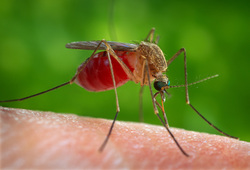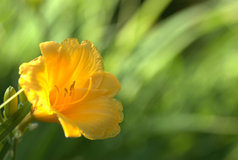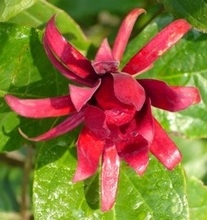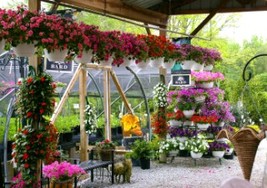|
Circa 1995
Are you a tasty, juicy morsel for a mosquito's dinner? What makes one person more susceptible to bites than another? How can the annoying itch be avoided? Summer time means mosquito time. Instead of becoming a sitting target, ready to be "eaten alive", understand mosquito characteristics and fight back. Some people do seem to be more attractive to mosquitoes than others, but no one really knows why. They seem to prefer males to females and young people to old. Mosquitoes seek out body warmth, moisture and the carbon dioxide in exhaled breath. They are also attracted by odor, including certain compounds found in perspiration.
1 Comment
Circa 1995
Circa 1995
Stella d'Oro Daylily - (Hemerocallis) This spectacular perennial is the longest blooming daylily in existence. the 8-12" "Star of Gold" blooms from June until first frost. It is low maintenance, adaptable to many environments, and very hardy. Each plant produces masses of large golden yellow ruffled flowers and has long rush-like leaves. Soil: Fertile, moist, well drained soil but heat and drought tolerant. Uses: Great as a border plant, massed for accent or in natural plantings. Very effective in terrace containers and rock gardens. Circa 1995
Calycanthus floridus - ( Common Sweetshrub, also called Carolina Allspice or Strawberry Shrub) Imagine relaxing on your back deck and smelling the aromatic scent of strawberries or pineapples. Because of its sweet smell, Calycanthus floridus or Sweetshrub is a perfect plant for every garden especially when used around outdoor living areas, under windows, beside screened doors or in a shrub border. There is a great variation in flower odor so buyer should smell before purchasing. Supposedly, the Sweetshrub bark was used as a substitute for cinnamon and was introduced into the United States in 1726. Description: Dense, bushy, rounded, or broad-rounded shrub of regular outline growing to 6-9' high. Leaves are dark green in summer and yellowish in fall. Sweetshrub flowers are perfect, dark reddish brown, 2" across with a very fruity fragrance in May and flowering sporadically into June and July. Soil: Adaptable to many soils, preferring a deep, moist loam; can survive in acid and alkaline soils. Light: Grows in sun or shade but does not grow as tall in sunlight. Circa 1995
Circa 1995
Garden centers are bursting with colorful flowers, thriving shrubs and blooming trees. These centers strategically place their best stock in prime viewing position for anxious spring gardeners to drool over and, eventually, purchase though they may not really need those specific plants. Before you make a landscape investment, check out the reputation of the garden center and consider your specific plant needs. Where to buy plant material A good green house should be clean - free of insect-and-disease harboring weeds and debris. Look for a display garden that shows how mature plants will appear. Always try to buy from a grower rather than a plant merchandiser. A good nursery will have plenty of signs and tags on each plant that includes the genus, species, and cultivar names. Tags also should state color, height, blooming season, hardiness information, and the soil, light and moisture requirements. Employees should be able to answer your questions such as where was the plant grown? Ask about guarantees. Many garden centers will either replace dead plants or offer credit toward a new purchase. Selecting the right plant Look for fat, stocky plants with healthy green leaves. Avoid plants with tall spindly stem and widely spaced leaves. Try to buy annuals before they bloom for a more spectacular show. All plants should be insect-free. Check the undersides of leaves for pests, and damage such as speckling from spider mites or bite-shaped holes on leaf margins form weevils and other pests. Discolored leaves indicate earlier watering problems, or plants with brown and dying centers. Plants should have well-developed root balls that hold their shape when slipped out of the pots. Short, white, "hairy" roots should just be visibly emerging from the soil. Disregard plants with dark or mushy roots or those that smell of ammonia. By selecting a reputable garden center and the healthiest plants, a spring garden can be a very rewarding activity. |
AuthorsCurrent and former staff members have contributed to our newsletter over the years. Now the articles are available to view here on our blog Categories
All
|
© 2024 Ski Landscape Corporation - Website by Day Design







 RSS Feed
RSS Feed